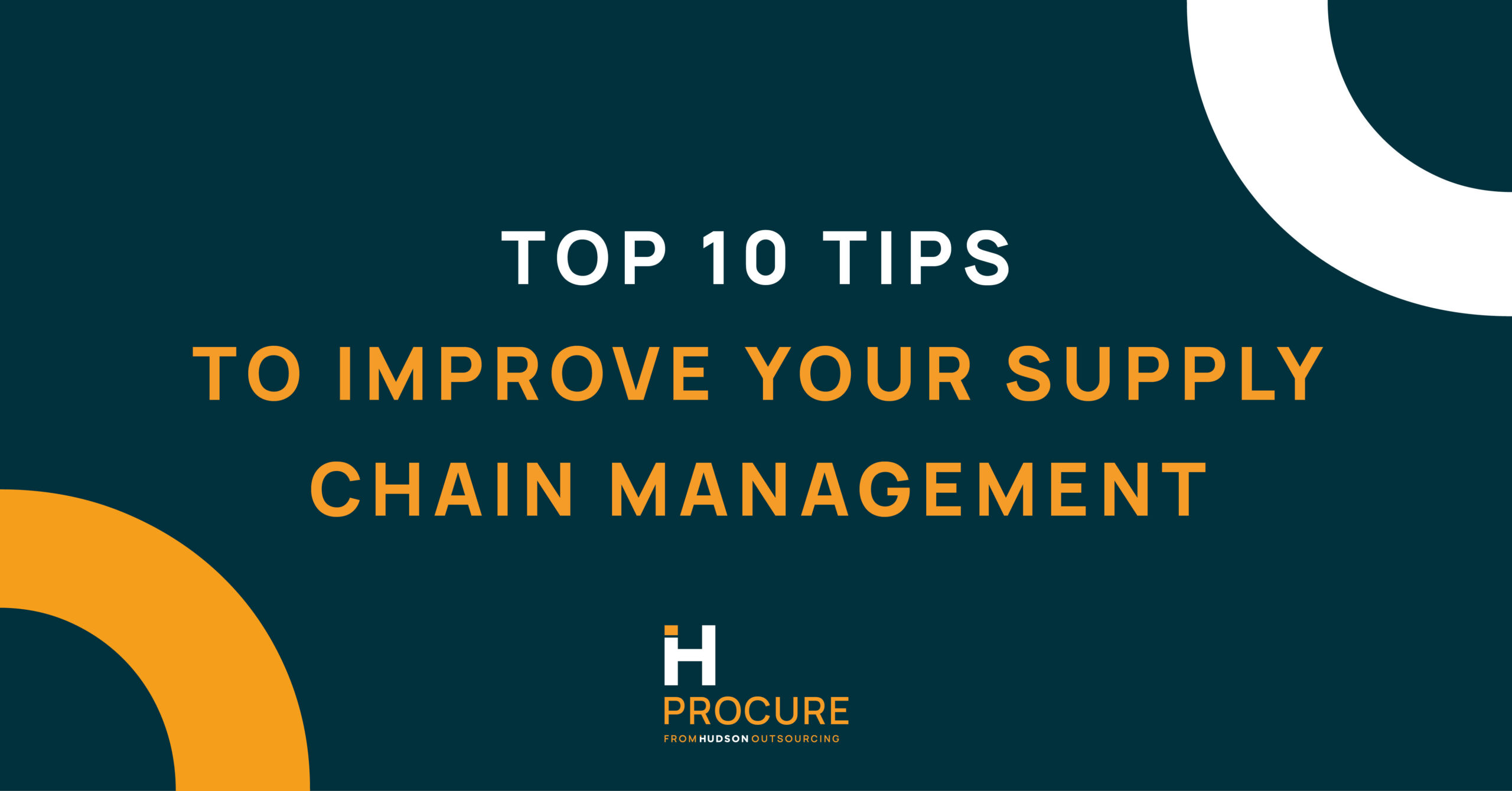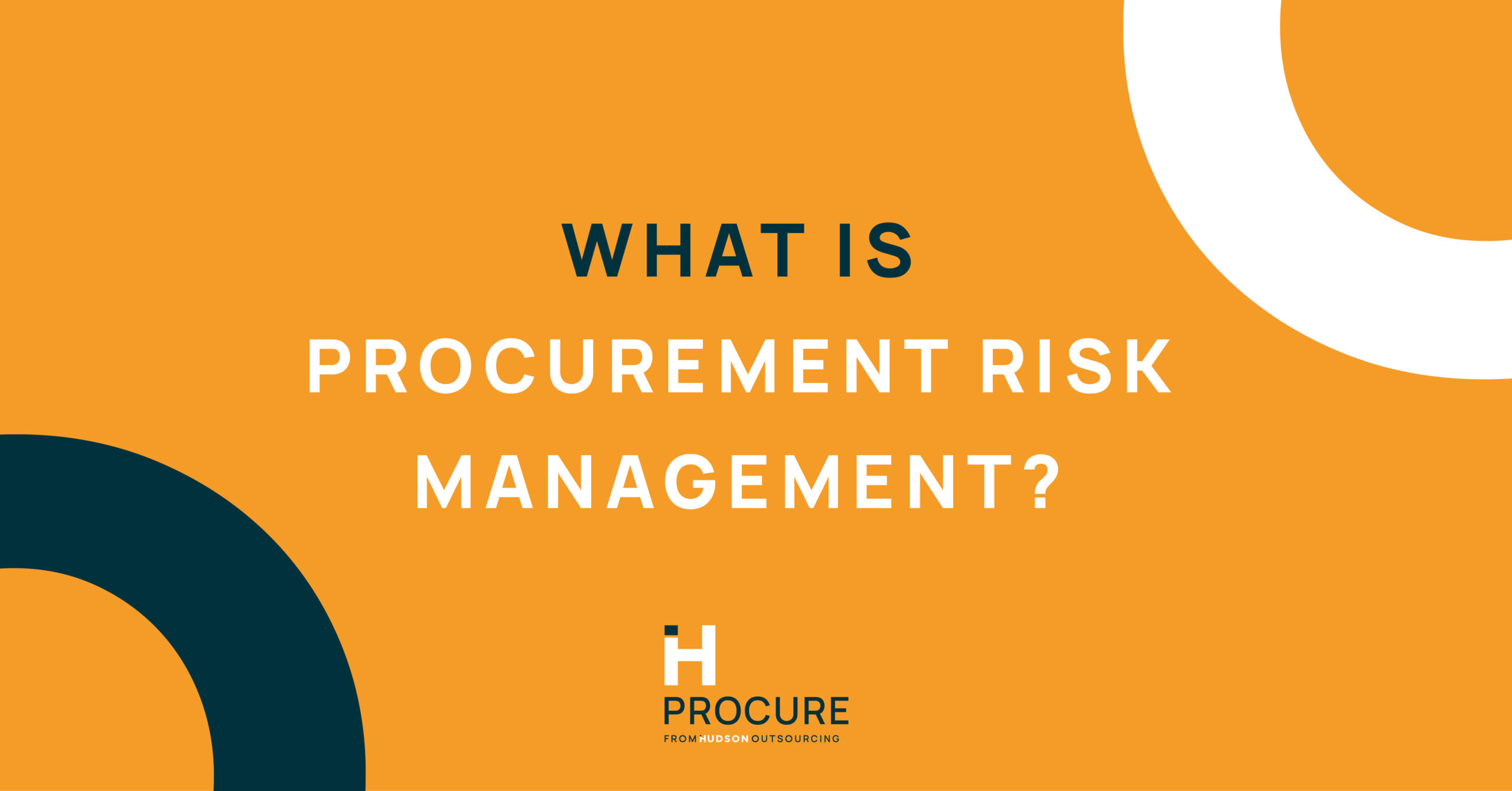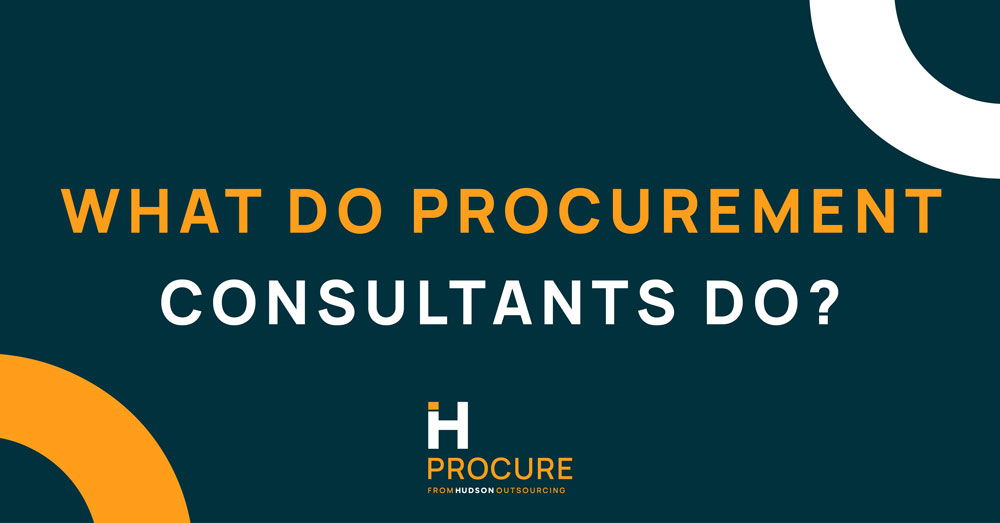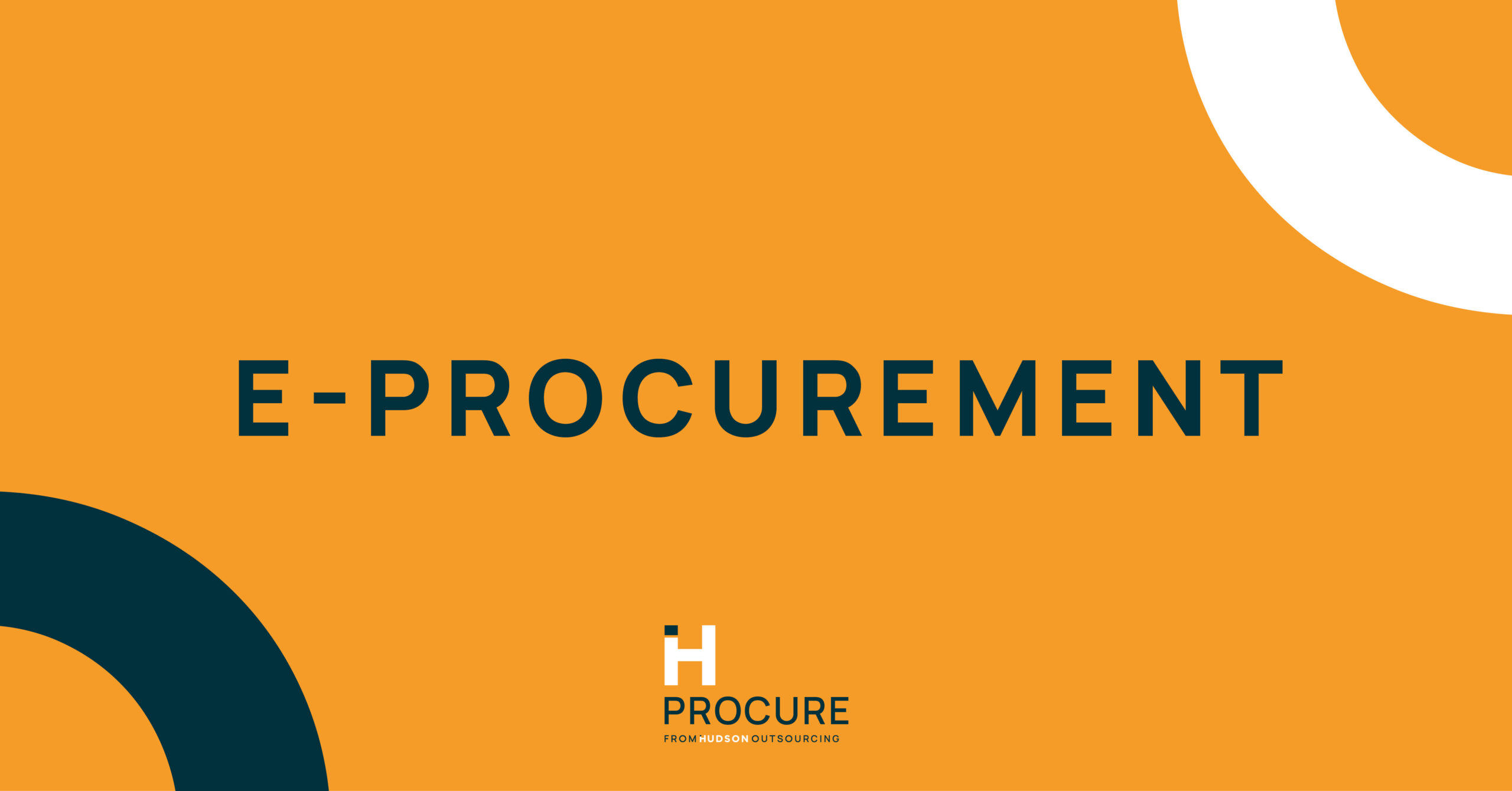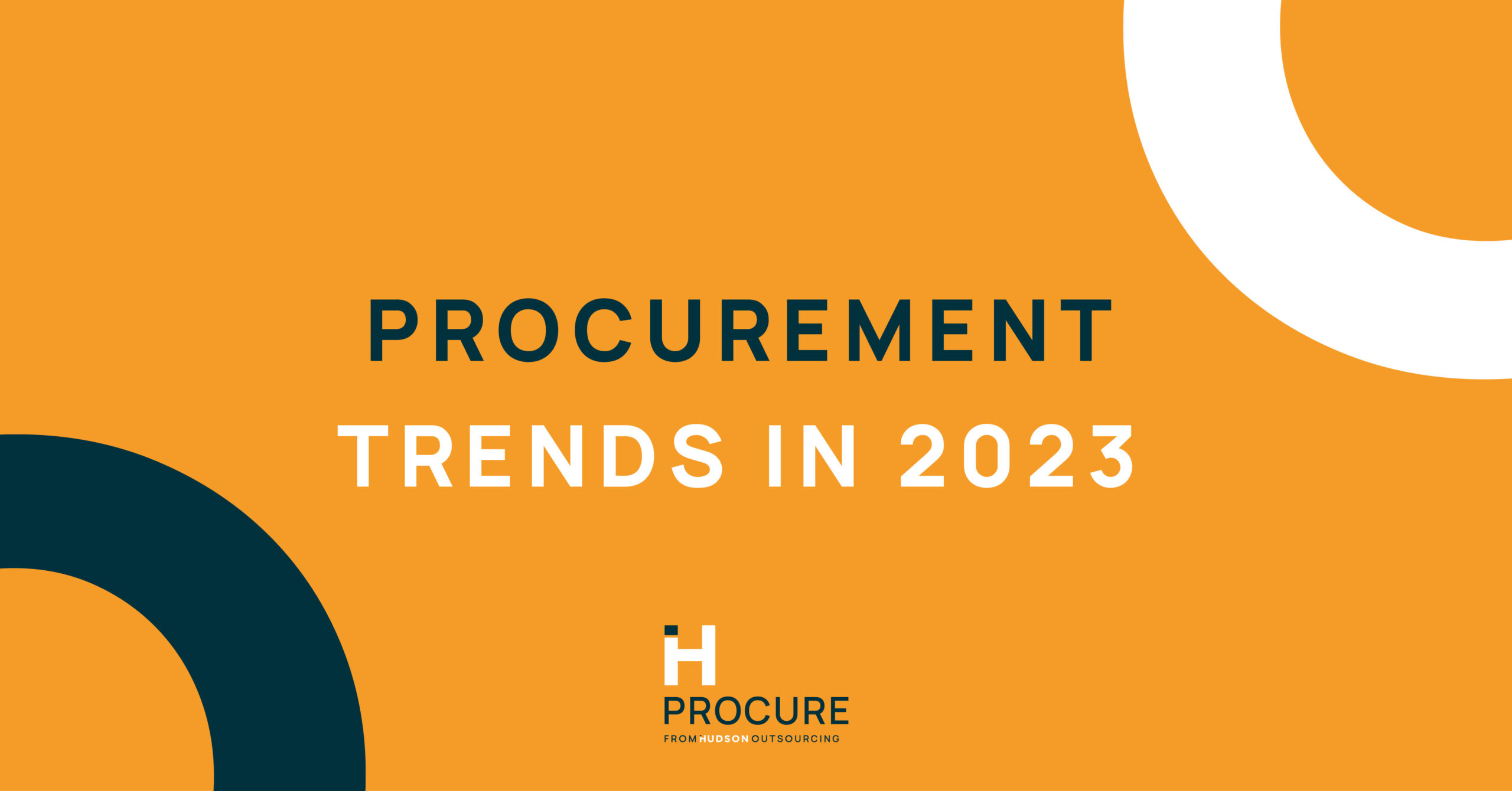Top 10 Tips to Improve Your Supply Chain Management
Improving your supply chain management is an ongoing and often stressful task that requires meticulous monitoring to ensure that you are optimising your procurement processes.
However, having a system in place that keeps you and your team aware, fully trained to deal with any unavoidable risks and a culture of constant improvement and growth, will give your business the best possible foundation for strong supply chain management.
So, in this blog we will cover good and bad supply chain management processes, implementing plans and our top 10 tips for your future supply chain successes.
What is Supply Chain Management?
Supply chain management in procurement is the process of managing the flow of goods and services from the original supplier to the end customer. It involves efficiently managing the sourcing, procurement, conversion, and logistics of various inputs to deliver the desired output for the customer. It includes activities such as planning, sourcing, contracting, managing inventories, forecasting, and managing transportation and distribution.
5 Good Supply Chain Management Processes
1. Demand and Supply Planning
Good supply chain management begins with effective demand and supply planning, which includes forecasting customer demand and anticipating changes in customer requirements.
2. Sourcing
Effective sourcing involves finding suppliers that can meet your quality, cost, and delivery requirements in an efficient manner.
3. Procurement
This involves selecting the right suppliers, negotiating contracts, and managing the purchasing process.
4. Inventory Management
Ensure that your inventory levels are appropriate to meet customer demands and that any necessary replenishments are made in a timely manner.
5. Logistics
Ensure that products are delivered from the suppliers to your customers quickly and cost-effectively. This includes selecting the right modes of transportation, tracking shipments, and coordinating delivery schedules.
5 Bad Supply Chain Management Processes
1. Poor communication between stakeholders
Poor communication between stakeholders can occur for a variety of reasons. However, these tend to be expectational. Different stakeholders will expect to receive reports/information in a certain way and how often that information is delivered will also differ between stakeholders. Communications can also break down due to differing, often conflicting supply chain objectives. Without a shared mission and strategy for information sharing, the supply chain can slow or halt altogether.
2. Lack of collaboration between departments
Similarly, to communication difficulties, working as a team is key to efficient processes anywhere, but most vitally in supply chain management. A lack of collaboration, whether that is across departments or in individual teams, can create both a tense and disorganised atmosphere. This will create inefficiency through potentially duplicating or missing vital data which could have been resolved by collaboration.
3. Poor inventory management
Inventory tracking is necessary to ensuring efficient supply chain management processes. This helps you to avoid overstocking or under stocking supplies–both of which can create large problems that can be both costly and slow down your supply chain. This is caused by inadequate forecasting and outdated inventory technology.
4. Inconsistent supply chain planning and forecasting
As mentioned above, supply chain planning must be both consistent and often to ensure that stock levels, stakeholders and potential risks are accounted for. Failing to use up-to-date forecasting technology can lead to inaccuracies, inadequacies, or irrelevance in your reports.
5. Not leveraging technology to improve processes
Failing to utilise technologies such as data and analytics or automated solutions can create further inefficiencies as you waste time with manual labour tasks which your competitors may not be troubled with. Technology like the Internet of Things (IoT) is an efficiency tool which can locate materials and service equipment without you having to think about it.
Top 10 tips for your future supply chain successes
1. Establishing Strategic Sourcing
Strategic sourcing involves setting priorities and objectives for procurement planning, forecasting suppliers and materials, negotiating with suppliers, and developing supplier relationships and supplier networks.
2. Document Management
This involves creating a stable and organised system for storing and managing all documents related to supply chain management such as contracts, purchase orders and invoices.
3. Inventory Management
This involves strategic planning and controlling of all activities related to inventory, such as forecasting demand, procuring, storing, and monitoring inventory levels.
4. Risk Management
This includes identifying and assessing risks in supply chain processes such as fluctuating prices, supply shortages, and delays and disruptions, as well as developing strategies to identify, mitigate, and manage these risks.
5. Continuous Improvement
This involves collecting data on supply chain processes, analysing it, and using the results to identify areas where improvements can be made. It also involves monitoring industry best practices and implementing them as appropriate. Improve the processes in your supply chain to reduce costs, increase flexibility, and ensure operational excellence. This can include such things as implementing a vendor managed inventory (VMI) system, just-in-time delivery, or a total quality management (TQM) system.
6. Embrace analytics
By taking advantage of new data and technologies, organisations can gain insights into their customers and supply chain operations. Having visibility into buyers’ needs, suppliers’ performance, and inventory levels will allow supply chain managers to anticipate and respond to changes in demand or unexpected along with allowing for greater efficiency.
7. Invest in training and development
Investing in the training and development of supply chain team members is essential for success. With the ever-changing technology landscape, providing necessary resources and training can make sure the team is equipped to handle the latest advancements in supply chain management.
8. Focus on sustainability
Customers are placing greater focus on sustainability, which is why it is important for companies to consider environmental impacts and health and safety when making decisions. Tracking supply chain performance along these dimensions, and making changes to reduce the overall ecological footprint is becoming an increasingly important factor in supply chain success.
9. Optimise processes
Optimise the processes in your supply chain to reduce costs, increase flexibility, and ensure operational excellence. This can include such things as implementing a vendor managed inventory (VMI) system, just-in-time delivery, or a total quality management (TQM) system.
10. Implement supply chain security measures
Security is an increasingly important factor in supply chain operations. Establish security protocols and processes that can detect and respond to cyber threats, physical intrusions, or other potential risks.
More Information About Us!
Procure Consult
With Procure Consult, we offer support with tender management and ad-hoc procurement consultancy. Our expert team will manage the end-to-end procurement process or offer assistance at any stage, as and when required.
Procure Health Check
With Procure Health Check, we’ll conduct a full review of the strategic and operational procurement processes within your organisation. We’ll identify the areas that need improvement and help you drive greater value from the procurement process.
Procure Analyse
The purpose of Procure Analyse is to conduct a high-level analysis of your spending activity. We’ll help you understand your current purchasing behaviour and highlight areas that can deliver greater value. Procure Analyse is also offered as part of Procure Health Check or as a standalone service.
Procure Outsourcing
With Procure Outsourcing, we deliver a range of procurement solutions on an outsourced basis, completely bespoke to you. This can range from delivering multiple tender projects as a package to delivering the full procurement function of your organisation.
Procure Post
Are you trying to find a supplier for your project? Post your tendering opportunity onto any of our 11 sector-specific portals for FREE with Procure Post!
Housed by our sister company, Hudson Discover, our portals host thousands of tendering opportunities for organisations of all sizes. For an additional cost, we’ll even help you identify your requirements and find the most suitable suppliers for your business.
Get in touch for a consultation and find out how we can help your business drive better value from procurement.

